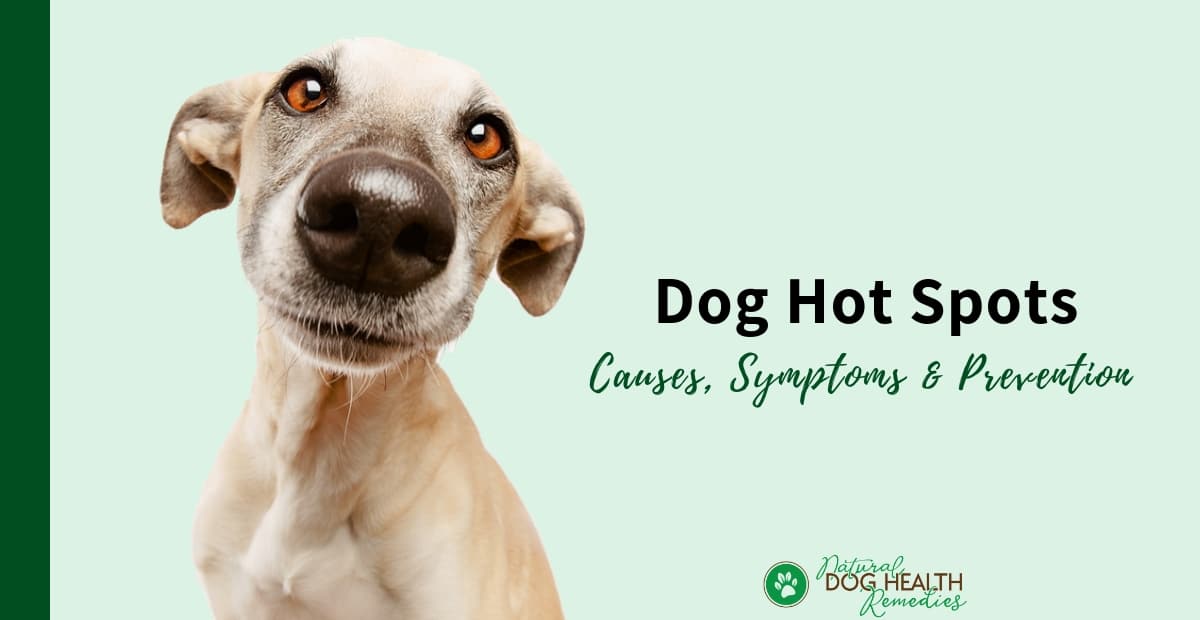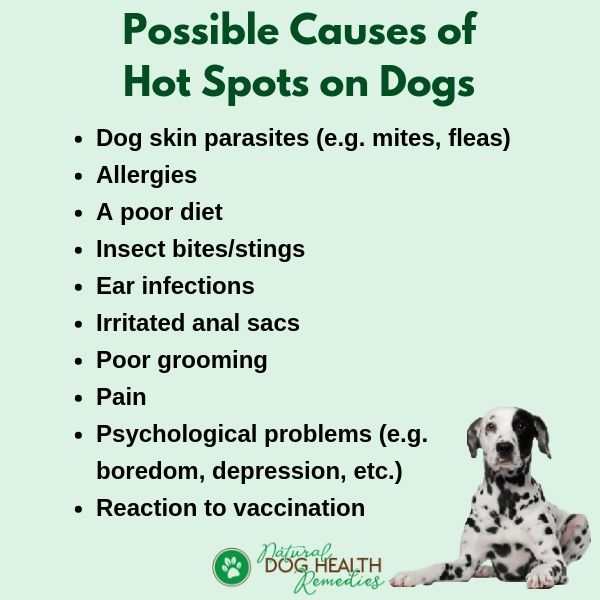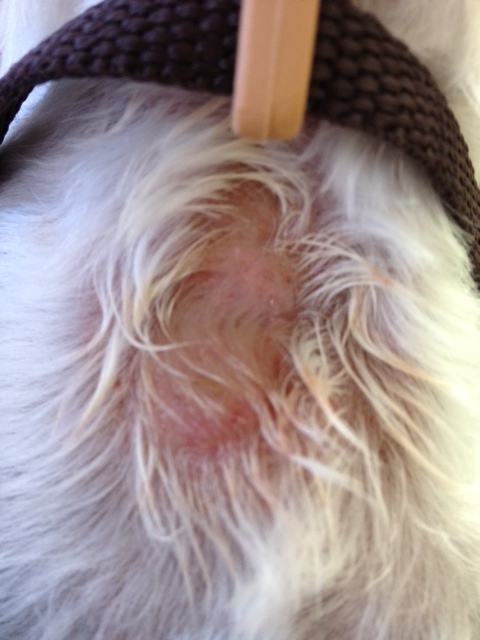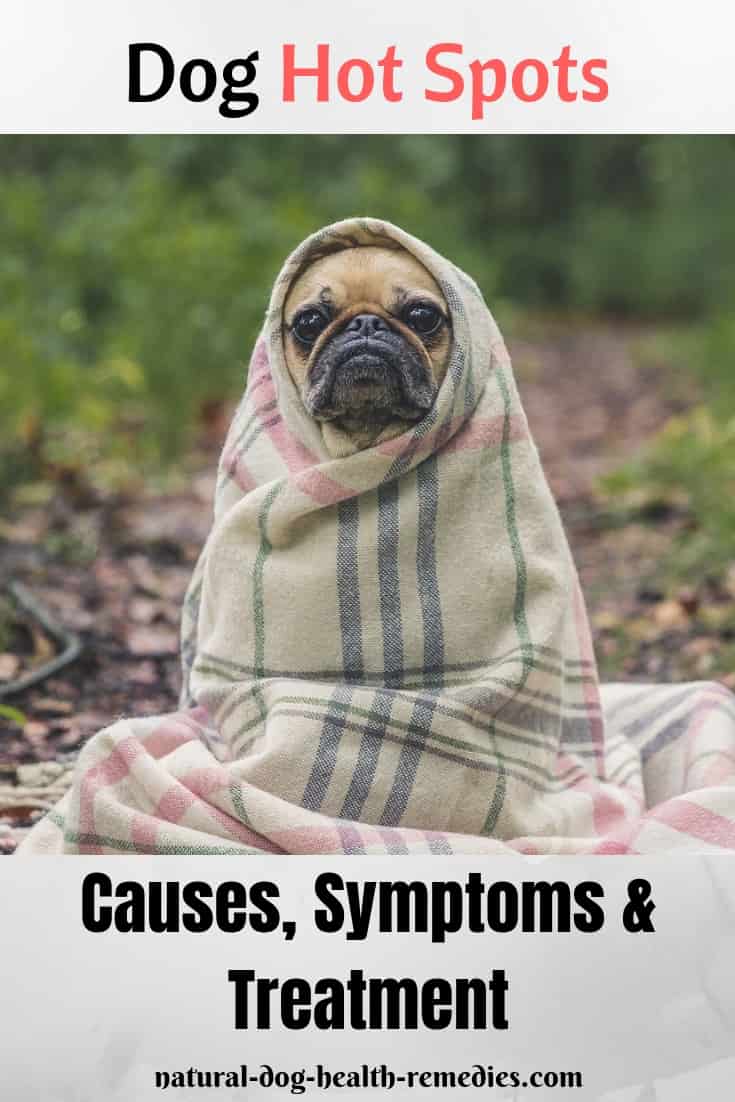Dog Hot Spots

Overview
Hot spots, aka superficial pyoderma, are circular patches on the dog's skin which cause intense itching. Hot spots occur when the dog's natural bacteria over-populate the skin, usually because the dog's immune system is not a hundred percent up to par.
Hot spots that occur on dogs can happen and spread very quickly - often in a matter of hours. The intense itching they cause results in non-stop, violent scratching by the dog.
That in turn causes skin irritation, inflammation, and subsequent hair loss, and the patches will become bright red, sometimes swollen.
Once the skin is damaged, bacteria can move in and spread among the hair follicles. Bacterial infection can happen very quickly.
Hot spots are not life-threatening though they look nasty. Also, because of the intense irritating itch, hot spots may turn even a mild-tempered, friendly dog into a short-tempered, growling beast.
What Causes Dog Hot Spots in Dogs?
Hot spots can occur to all dogs, but are particularly common in dogs with a very thick coat, dogs with dirty skin, and dogs with allergies and/or flea problems.
There are numerous possible causes but the common ones are:
- Dog skin parasites, such as fleas, mites, etc.
- Allergies (food, contact, airborne)
- A poor diet
- Insect bites or stings
- Ear infections
- Irritated anal sacs
- Grooming problems (e.g. matted, tangled hair)
- Psychological problems (e.g. boredom, depression, anxiety, irritability, frustration)
It is also important to note that sometimes pain can cause hot spots. Dogs usually lick and bite an area that is painful, and the constant licking and biting can eventually result in a hot spot.
Some holistic vets also suggest that some dogs may break out in hot spots weeks or even months after vaccination.
If your dog tends to develop hot spots shortly after being vaccinated, tell your vet and think of ways to minimize vaccinations. For example, do a titer test before any booster shots.
(Don't know what a titer test is? Read this page to find out!)

Symptoms of Hot Spots
If your dog has hot spots, he will show the following signs:
- Intense itchiness.
- Sores that are red, oozing, and painful.
- Hair loss.
- The dog may become agitated.

Courtesy of Dr. Nelson's Veterinary Blog
The most common locations for hot spots are the legs and feet, flanks, and rump, but they can also occur somewhere else, e.g. on the underside of the neck as you can see in the picture above.
When badly infected, the hot spots may turn greenish and a smelly pus may ooze. This can be painfully itchy, causing the dog to continue scratching, licking, and biting - sometimes until it bleeds.
Note that sometimes, skin problems that look like hot spots are in fact something else. For example, some fungal diseases and even some type of cancer start out looking like a hot spot.
If your dog's "hot spots" don't heal after a couple of days, it is important to get a proper diagnosis to make sure that the problem is actually hot spots and not something more serious.
Conventional Treatment for Dog Hot Spots
Conventional treatment usually involves the use of medications such as antihistamines (e.g. Benardyl) or short-acting corticosteroids to stop the itching. To prevent infections, conventional veterinarians also tend to intervene with some antibiotics.
An Elizabethan collar may be used to prevent the dog from constantly licking and biting at the hot spots.

Natural Hot Remedies for Dog Hot Spots
Herbs and other natural remedies are generally effective in treating hot spots, especially if applied at the onset of the skin problem.
However, if the hot spot does not begin to heal within a few days after home treatment, or if the hot spot is extremely painful for your dog, take him to a veterinarian immediately.
To get more information on using natural remedies to treat hot spots, please click here.
Preventing and Controlling Hot Spots in Dogs
Flea Control
 As one of the common causes of dog hot spots is flea infestation, we can prevent hot spots (or at least reduce the chance of our dogs getting hot spots) by flea control.
As one of the common causes of dog hot spots is flea infestation, we can prevent hot spots (or at least reduce the chance of our dogs getting hot spots) by flea control.
Want to know more about using natural products and remedies to control fleas? Please visit this page.
Preventing Formation of Hair Mats
Hair mats that lie against the skin are great hide-outs for fleas and ticks. It is not easy to remove hair mats because they lie very close to the skin, so it is important to prevent them from forming in the first place.
Brush your dog regularly, preferably once a day. Regular brushing can also help the skin breathe, making it harder for bacterial infections to start.
Stop the Licking
It is natural for dogs to lick themselves when they feel itchy or pain. However, excessive licking makes hot spots difficult to heal.
If your dog cannot stop licking his wounds, try to distract him by taking him out for a walk, or giving him a treat when he stops licking on your command.
If all else fails, put an Elizabeth collar on him to deter him from licking.
ReferencesEldredge, et al. Dog Owner's Home Veterinary Handbook 4th edition (Wiley Publishing, 2007).
C.J. Puotinen, Natural Remedies for Dogs and Cats (Keats Publishing, 1999).
R.H. Pitcairn, The Complete Guide to Natural Health for Dogs and Cats (Rodale, 2005).





